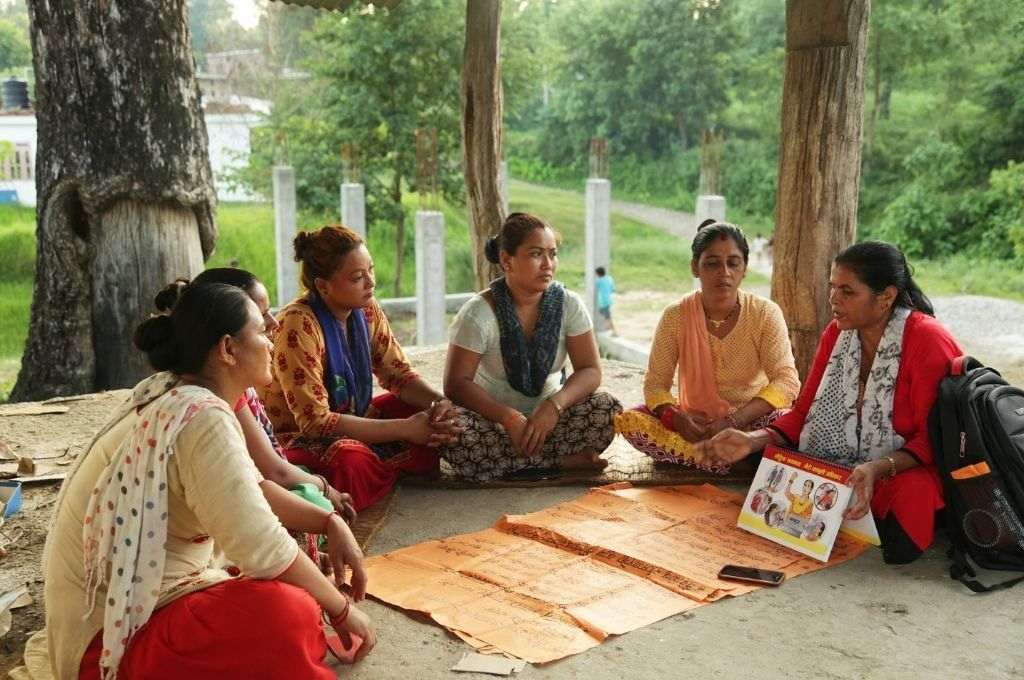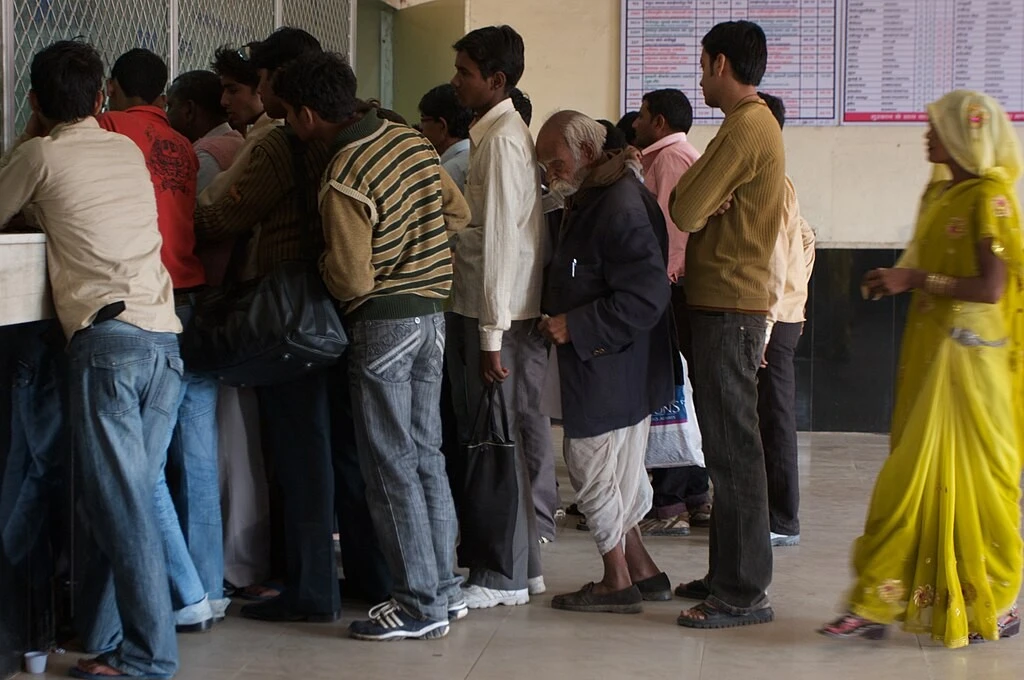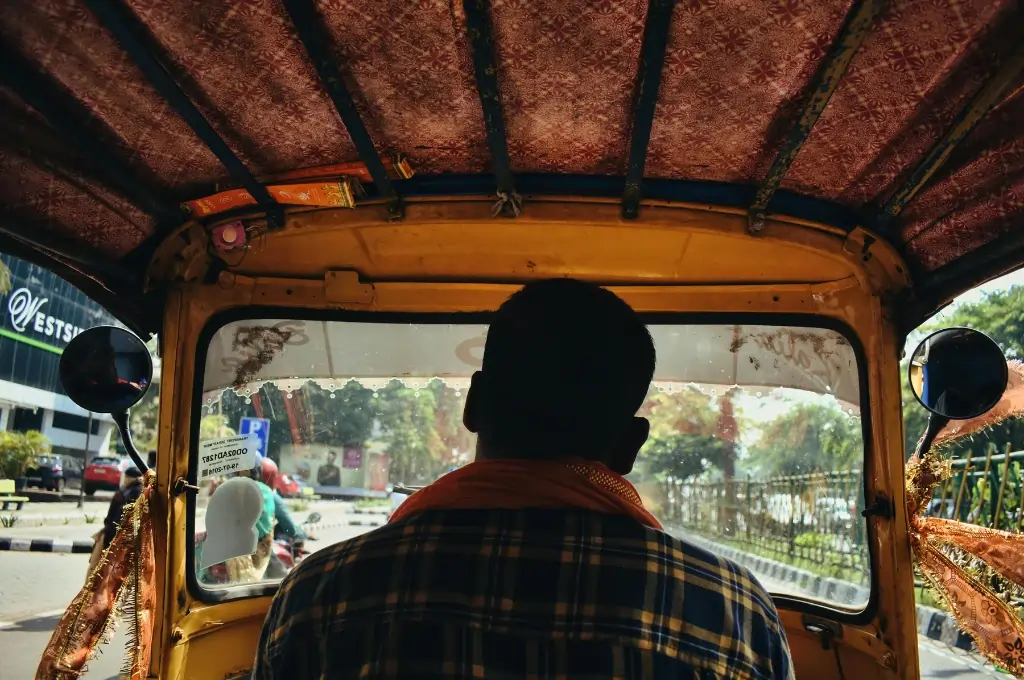Trafficking. It is the one word that does not fail to conjure up images of young women dotting the streets of red-light areas in crowded Indian cities to sell sexual services. As this stock media narrative draws at our heart strings, feelings of empathy are replaced by righteous outrage and a desire for using stringent criminal laws to bring heartless traffickers to book.
Yet the intellectual history of the anti-trafficking discourse and its activist travels are far more complex.
In its most recent iteration, this discourse has emerged as a response to the global movement of capital and labour in the years following globalisation. In the late 1990s, countries came together to negotiate and adopt the UN Convention against Transnational Organised Crime 2000, along with two supplemental protocols, one on trafficking which criminalised the coerced, cross-border movement or harbouring of a person for purposes of exploitation (the ‘Protocol’) and the other criminalising the illegal movement of migrants across borders.


The organised crime orientation of these protocols cast the die for the regulatory response to trafficking. While states initially targeted sex work to counter trafficking, decades of globalisation inaugurated an inexorable race to the bottom for migrant workers. The resultant exploitation led to an expansion of the frame of trafficking to include many forms of labour exploitation, including forced labour, servitude, and debt bondage across numerous informal labour markets, including sex work, garment work, domestic work, agriculture, and manufacturing.
As countries ratifying the trafficking protocol sought to implement its mandate through domestic law, governments had to contend with domestic and regional forms of labour exploitation and indigenous responses to such exploitation. Even as these regulatory frameworks (indeed paradigms) involving labour laws, human rights laws and laws protecting socio-economic rights sit uneasily with the criminal law model of the Protocol, governments have all too often been eager to embrace the carceral1 logic of anti-trafficking law, thereby assuming increased police power. Thus it is no coincidence that the Protocol was one of the most rapidly ratified UN instruments of all time.
India is no exception. As a country with a long-standing problem of abject poverty and poor labour conditions, and most recently said to be home to 8 million ‘modern slaves’, India has been sensitive to international opinion and eager to make its mark on the anti-trafficking landscape. Since 2000, the government has initiated increasingly punitive proposals to target trafficking, culminating in the Trafficking in Persons (Prevention, Care and Rehabilitation) Bill, 2021 (the ‘bill’) published for public consultation in July 2021.
Our essay asks if this most recent legislative proposal, scheduled to be tabled in the 2021 winter session of Parliament, adequately addresses the problem of trafficking and whether in doing so, it passes constitutional muster.
The proposed legislation
India has long associated trafficking with sex work, whether performed voluntarily or not. Indeed, policy makers since independence have considered the sale of sexual services for money to be inherently harmful and violative of women’s dignity, especially since Indian women are thought to resort to sex work out of sheer economic need. We call this sex work exceptionalism.

As international attention on trafficking gathered momentum after 2000, the Department (now Ministry) of Women and Child Development (‘MWCD’) sought to amend the Immoral Traffic (Prevention) Act, 1956 (‘ITPA’) in 2005 to criminalise the customers of sex workers. This amendment faced opposition even within the union cabinet, given its potential to severely jeopardise the country’s HIV prevention efforts, and it eventually lapsed. In 2011, as the government once again pondered law reform, the Nirbhaya rape and murder led to the Verma committee’s comprehensive report which included a proposed anti-trafficking provision that conflated voluntary sex work with trafficking. This was reversed after the National Network of Sex Workers intervened, and the offence of trafficking under Section 370 of the Indian Penal Code, 1860 (‘IPC’) mirrors the Protocol’s definition and does not conflate trafficking with voluntary sex work.
Around this time, a public interest lawsuit filed in 2004 by the non-governmental organisation Prajwala was dismissed by the Supreme Court on MWCD’s undertaking that it would prepare a comprehensive legislation on trafficking. Consequently, the Trafficking of Persons (Prevention, Protection and Rehabilitation) Bill was proposed in 2016. A version of this bill was passed by the Lok Sabha in July 2018 but lapsed before introduction in the Rajya Sabha. The MWCD proposed a revised version of this bill in July 2021 inviting comments over a two-week period.
Briefly, the draft bill has 11 chapters that aim at the prevention, protection and rehabilitation of trafficked persons. Chapters 2 and 4 on prevention are short. Chapter 3 sets up anti-trafficking committees at the central, state and district levels. Chapter 5, a substantial chapter, deals with raids, rescue and sending trafficked victims to protection and rehabilitation homes. Chapter 6 deals with the international, inter-state and intra-state repatriation of victims and Chapter 7 with compensation for victims. The longest chapters in the bill, namely Chapters 8 and 9 deal with offences.
While many countries criminalise trafficking and repatriate migrants to their homes, institutionalised rehabilitation is uncommon.
The bill visualises a specific mode of intervention involving prevention, rescue and institutionalised rehabilitation alongside prosecution. While many countries criminalise trafficking and repatriate migrants to their homes, institutionalised rehabilitation is uncommon. This can be traced back to the ITPA although the bill itself applies to all sectors of work. Furthermore, the chapters on offences are modelled on recent amendments to laws on rape and sexual violence. There are high minimum mandatory punishments, reversals of the burden of proof, the introduction of strict liability offences, and the imposition of the death penalty. This is despite the fact these laws have neither reduced the incidence of sexual violence nor increased convictions.
Punitive approach
The trafficking laws proposed since 2016 adopt a carceral approach in derogation of India’s own innovative attempts to address extreme forms of exploitation. In the face of large-scale inter-state migration, often to work on development projects, where workers’ recruitment and working conditions approximated what would be labelled as ‘trafficking’ today, Parliament passed several labour laws. These include the Bonded Labour System (Abolition) Act, 1976 (‘BLSAA’), the Contract Labour (Regulation & Abolition) Act, 1970, as amended in 1986, and the Inter-State Migrant Workmen Act, 1979.
An activist Supreme Court defined the concepts of ‘force’ in labour (e.g. someone who takes up an exploitative job to escape starvation) and ‘exploitation’ (holding that payment of a wage less than the minimum wage is forced labour) broadly in consonance with Indian realities. This jurisprudence has been extended to the Mahatma Gandhi National Rural Employment Guarantee Act, 2005 (‘MGNREGA’) and the Supreme Court has held that the state’s failure to pay minimum wages under the MGNREGA amounts to forced labour.
Thus, there are indigenous understandings of what constitutes ‘trafficking’. The response has been to improve the bargaining power of workers vis-à-vis employers through accessible administrative law mechanisms rather than a carceral approach that is aimed at traffickers and intermediaries. However, because the Indian government and civil society groups understood trafficking to be restricted to trafficking into sex work or sex work (even if voluntary), these alternate labour law and development law-oriented approaches have been eclipsed by the imported criminal law model of the UN trafficking protocol.
Unfortunately, not only has indigenous jurisprudence on trafficking been ignored, little thought has been given to the coordination between the bill and the laws mentioned above. Although Section 55 declares the draft bill’s co-existence with existing laws and its over-riding effect in case of inconsistency, it is untenable in practice. Under the BLSAA (which has survived the recent labour law consolidation), a bonded labourer is to be brought before the labour officer or the district magistrate upon rescue. The current bill relies on police and magistrate’s courts with no mention of the labour officer. When the bill in its current form is enacted and the law implemented, there will be confusion on exactly which government functionaries should be involved.
The 2021 draft bill is also inconsistent with the new labour codes including the Occupational Safety, Health and Working Conditions Code, 2020 (‘OSHWCC’) and the Code on Social Security, 2020. The OSHWCC defines migrant workers as voluntary workers but under the bill, even a worker working on voluntary terms but subject to ‘the abuse of a position of vulnerability’ (typically equated with vulnerability) would be treated as trafficked. Both laws are also diametrically opposed in their treatment of economically vulnerable workers. Under the OSHWWC, inspectors give the employer 30 days to rectify any non-compliance before prosecution is launched. But under the bill, a migrant worker subject to the ‘abuse of a position of vulnerability’ would be treated as trafficked and sent to a rehabilitation home. Practically speaking, it is hard to know which authority will deal with a ‘trafficked’ migrant worker and which laws to implement.
Violative of the Constitution
Anti-trafficking laws around the world are poorly implemented due to the broad definition of trafficking under the Protocol, leading to what Janie Chuang calls “exploitation creep.”2 The draft bill similarly uses vague and inconsistent definitions of trafficking. To illustrate, varied definitions of the term ‘exploitation’ are used in Sections 2(7), 2(25) and 23. Trafficking itself is a new offence and not well understood by the public but attracts stringent penalties. An overbroad and contradictory definition of the offence is therefore problematic and is exacerbated by the lack of gradation between base and aggravated offences and the lack of a coherent sentencing policy. High punishments and penalties are prescribed including the death penalty. Essential elements of an offence, such as mens rea (or criminal intent) and actus reus (the criminal act), which normally need to be proved by the prosecution, are presumed to exist. The bill thus violates constitutionally guaranteed liberties under Articles 14 and 21 of the Constitution.
The draft bill enshrines raids, rescue and rehabilitation. Little more than police suspicion is needed to trigger a rescue mission. Rescued survivors are to be sent to protection and rehabilitation homes despite the crumbling infrastructure of existing homes. Recollect the horrors of the Muzaffarpur homes where minor girls were raped, drugged, and forced to do sex work. Sexual abuse in such homes have been widely documented, causing women to escape, riot, and even die by suicide.
The bill does not specify a time period for being kept in a home. Release involves a needlessly tedious process. There are no guidelines on the factors for a magistrate to consider, but the bill presumes that the victim has no agency and that exploiters and traffickers are likely to pose as family members of the survivor. So the request for release is prone to being presumed to be coerced and therefore summarily rejected. Further, there is minimal state supervision of homes. Survivors’ liberty is thus denied without following a procedure established by law.
The July 2021 version of the bill imagines trafficking to be the work of organised crime networks which need to be dealt with an iron hand.
The July 2021 version of the bill also violates Article 19 of the Constitution, especially the freedom of speech and expression and the freedom to practice one’s occupation. It imagines trafficking to be the work of organised crime networks which need to be dealt with an iron hand. But the bill also prohibits the use of media for trafficking and thus bans the voluntary production and viewing of pornography as well as the use of technology for consensual sexual activity and imposes liability on intermediaries although other laws already deal with this.
The draft bill seeks to abolish sex work by criminalising customers of sex workers. Where customers are criminalised, sex workers’ freedom to practice their occupation is automatically curtailed. This is a significant departure from India’s existing jurisprudence on sex work. Even feminists who lobbied for the passage of the Suppression of Immoral Traffic Act, 1956 (renamed as the ITPA) were aware that a blanket ban on sex work would violate Article 19(1)(g) of the Constitution and the right to practice one’s profession. In criminalising customers, the bill departs from jurisprudence under the ITPA where neither the adult sex worker nor the customer is held to be liable by courts for the voluntary sale and purchase of sexual services unless it involves commercialisation or causes public nuisance. Moreover, India has a robust sex workers’ movement that has persuaded the police in various states not to use the ITPA against sex workers. Several courts and human rights bodies have issued judgments and advisories that uphold sex workers’ right to life with dignity.
The Supreme Court has also recognised the sexual autonomy of individuals by decriminalising adultery, decriminalising same-sex relationships, and recognising bodily autonomy as a component of the fundamental right to privacy. If anything, these decisions require a renewed challenge to the constitutionality of the ITPA. If passed in its current, July 2021, form, the bill will reverse the hard-won gains of the sex workers’ movement by pushing them over the edge of precarity and exposing them to physical and sexual violence.
The bill’s provisions also violate the right to privacy of various actors. It relies on a ‘network of informers’ to inform police and enforcement authorities about trafficking. Surveillance passes for prevention. The police can initiate raids based on little evidence. Survivors of trafficking will be ‘tracked’ for two years after their release from protection and rehabilitation homes. The proposed legislation requires that a database of offenders be maintained with no safeguards against abuse by enforcement authorities.
The list of provisions in the bill which potentially violate the Constitution is too long to reproduce here. Suffice it to say, that the proposed legislation goes well beyond targeting organised criminals who profit from trafficking. It targets large swathes of the economy including businesses carrying out lawful activities (like spas, parlours, employment agencies), cultural practices (like nautankis, nats, circus, melas), the media, commercial carriers in the travel industry, employers, contractors, sub-contractors as well as citizens (for failure to report trafficking through mandatory reporting provisions). In conclusion, while the intentions of the drafters of the bill are noble, in their desire to secure convictions for the most egregious acts of traffickers, they ignore the dramatic consequences of the bill’s enforcement for vast sectors of the economy including marginalised groups most liable to be trafficked.
By adopting an overly carceral approach to trafficking driven by western countries’ border control agenda, the bill fails to recognise Indian realities where trafficking is fundamentally a problem of extreme socio-economic inequality, requiring a multi-faceted approach. Admittedly, the criminal law is an important tool, but it cannot be the primary tool given the poor state of the country’s criminal justice system. Significantly, even on its own terms, the bill does not pass constitutional muster and violates Articles 14, 19 and 21 of the Constitution. The bill does not comply with several provisions of the 2002 OHCHR Recommended Principles and Guidelines on Human Trafficking and Human Rights.3
Conclusions
At a time when the country’s labour laws have undergone a paradigmatic shift to appease corporate interests with no consultation with workers, we find in the latest available version of the bill (July 2021), a draconian criminal law ostensibly seeking to protect vulnerable workers from the worst forms of exploitation. Yet in the post-pandemic phase, when an additional 230 million Indians fell below the poverty line and are earning less than the minimum wage, is consigning them to protection and rehabilitation homes as victims of trafficking the solution to their immiseration? At best, the bill will remain a law on paper and, at its worst, produce negative consequences for the very groups it seeks to protect and adversely affect economic actors and the public at large. Unsurprisingly, a range of stakeholders have expressed serious concerns on several counts.
The July 2021 version of the bill must be rethought. If introduced in the Parliament in its current form, it must be referred to a parliamentary standing committee for extensive review and consultation with stakeholders.
This article was originally published on The India Forum.
—
Footnotes:
- Although the term ‘carceral’ relates to a prison, we use it to connote a law that places heavy emphasis on the use of the criminal law and consequently imprisonment for lengthy periods of time.
- Exploitation creep is where all forced labor is recast as trafficking, even if no one changes location at all. Second, all trafficking is labelled as slavery although under international law, slavery in legal terms is reserved for the most extreme forms of exploitation where one individual exercises the powers of ownership over another.
- Specifically, these relate to the non-criminalisation of survivors for immigration offences, ensuring freedom of movement, avoiding custodial detention of trafficked persons, proportionate sentencing for criminal offences, precise definition of crimes, protecting rights and dignity of trafficked persons during ‘rescue’ operations, contributions of survivors to developing anti-trafficking interventions, assessment of the human rights impact of anti-trafficking legislation, punishment of public sector involvement in trafficking and adopting labour migration agreements, including provision for minimum work standards and model contracts.





